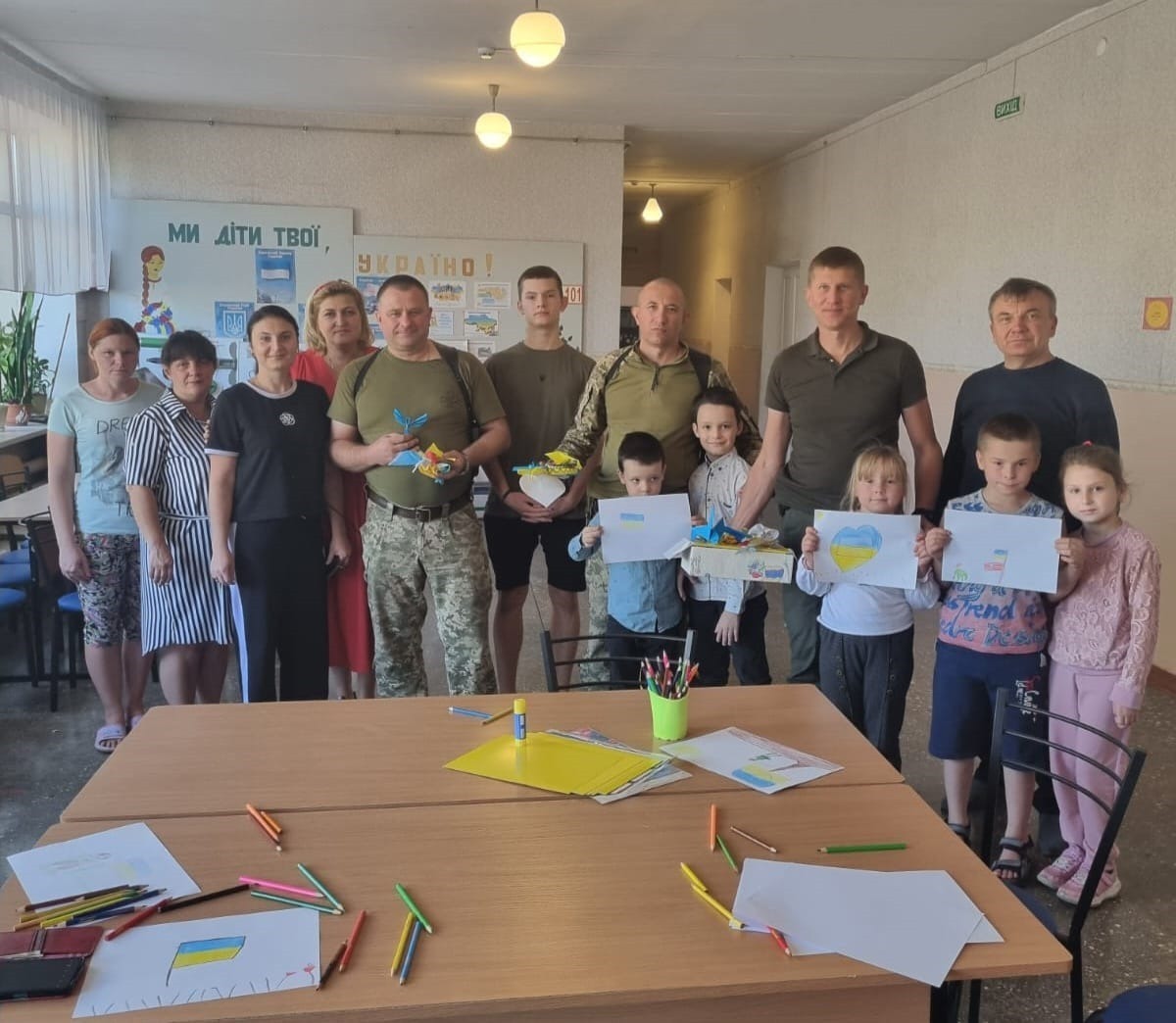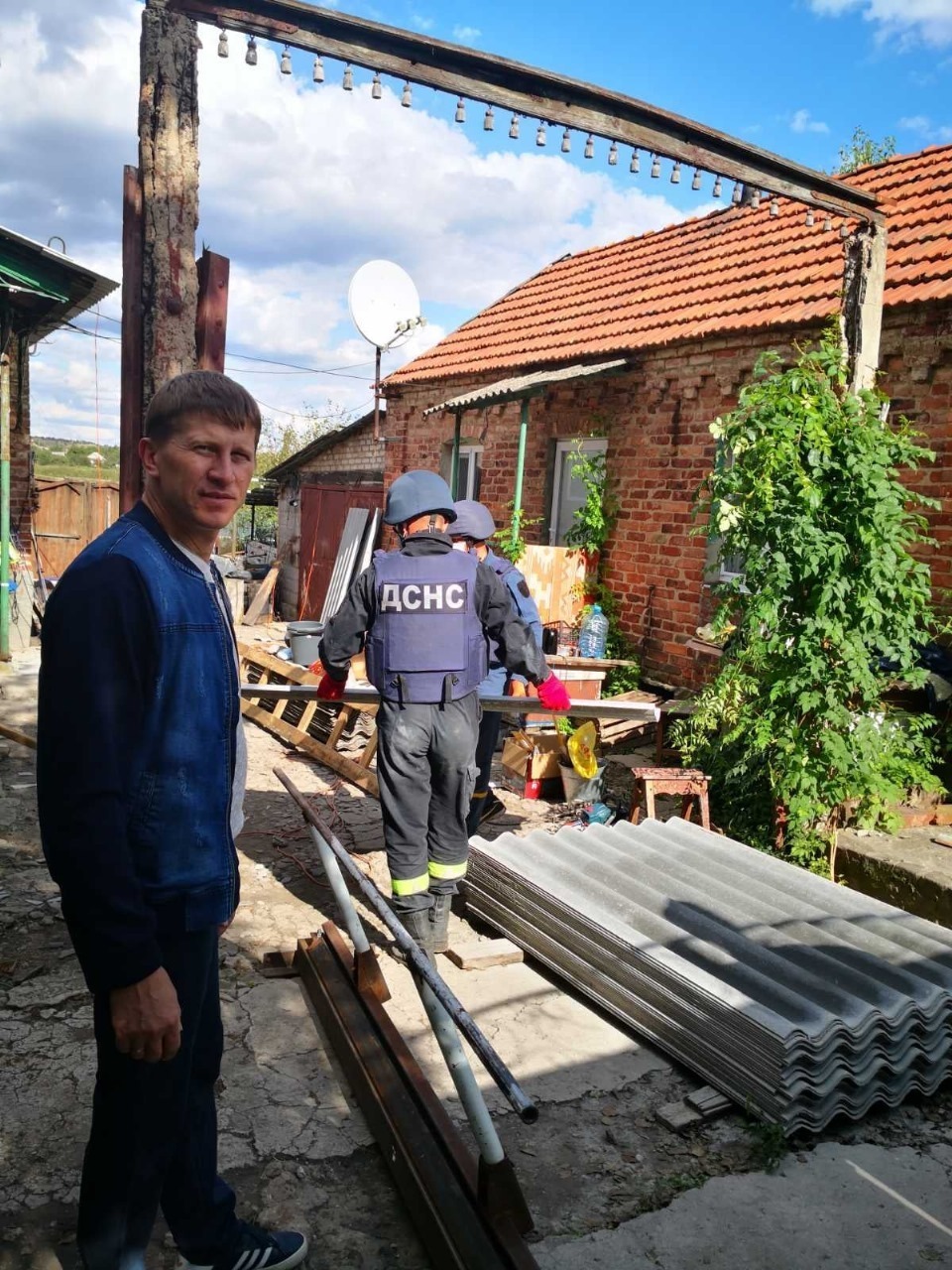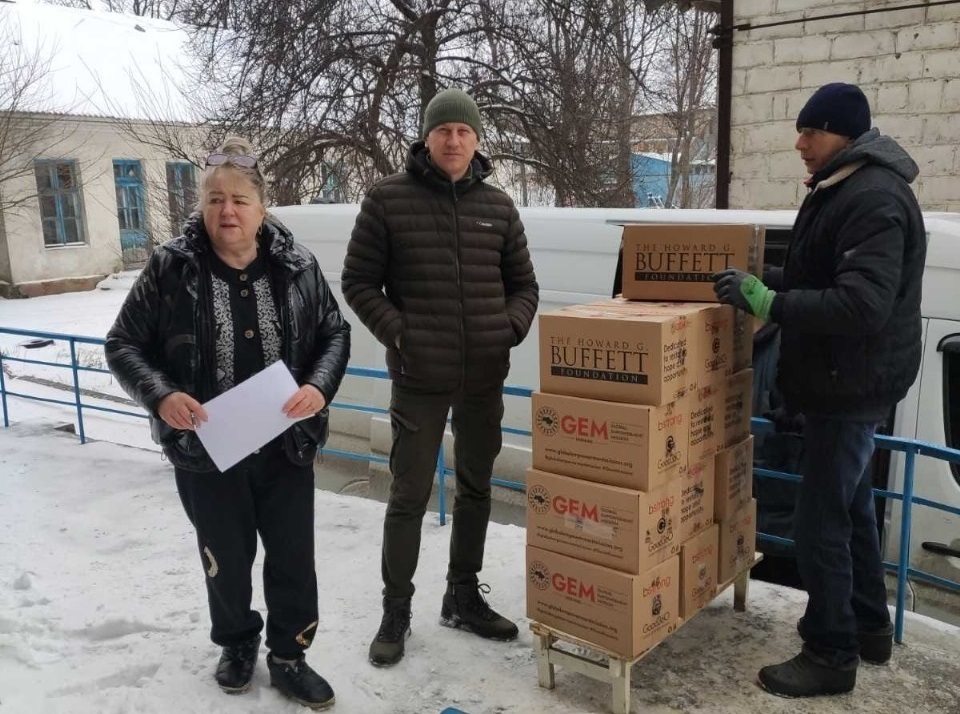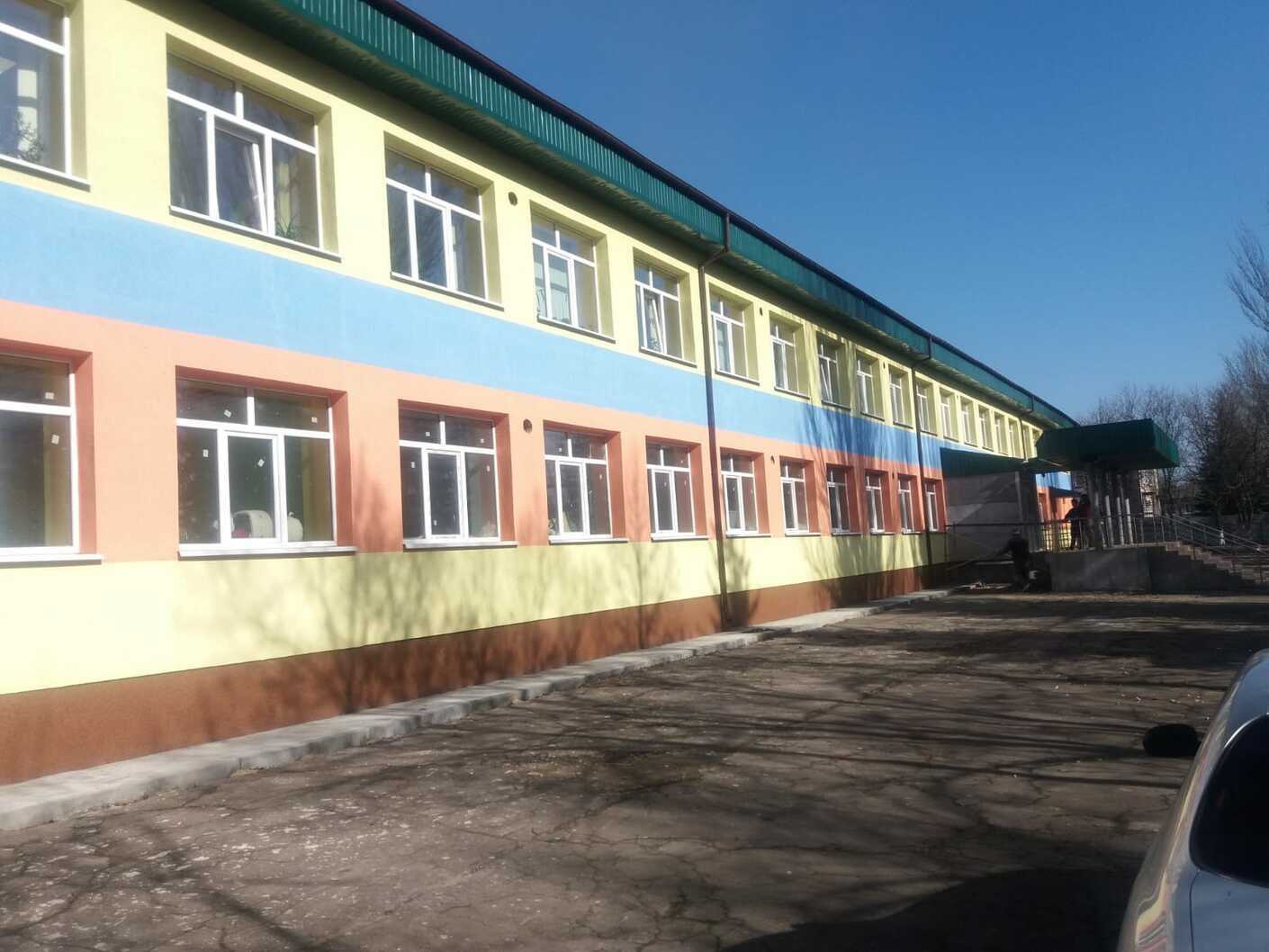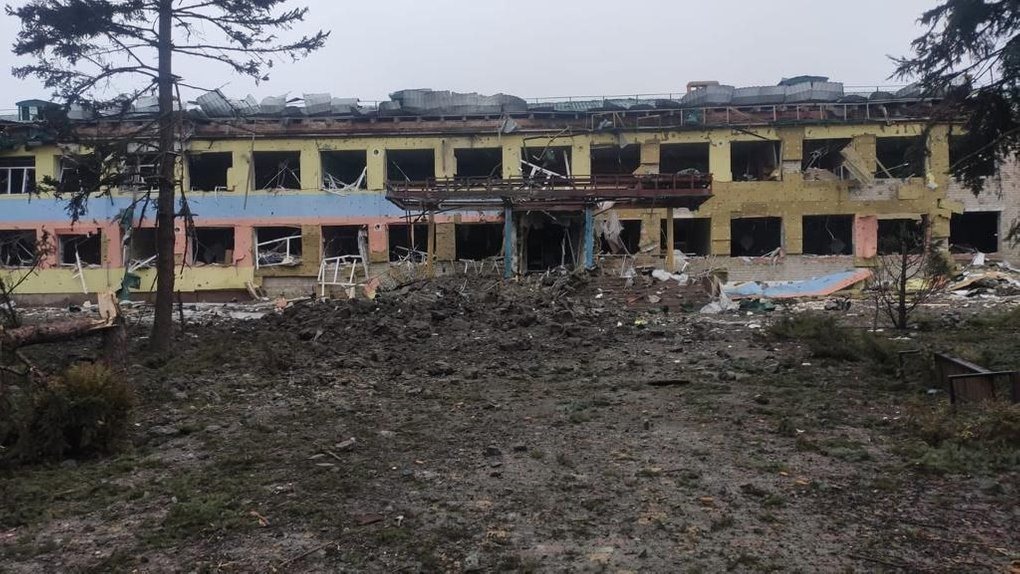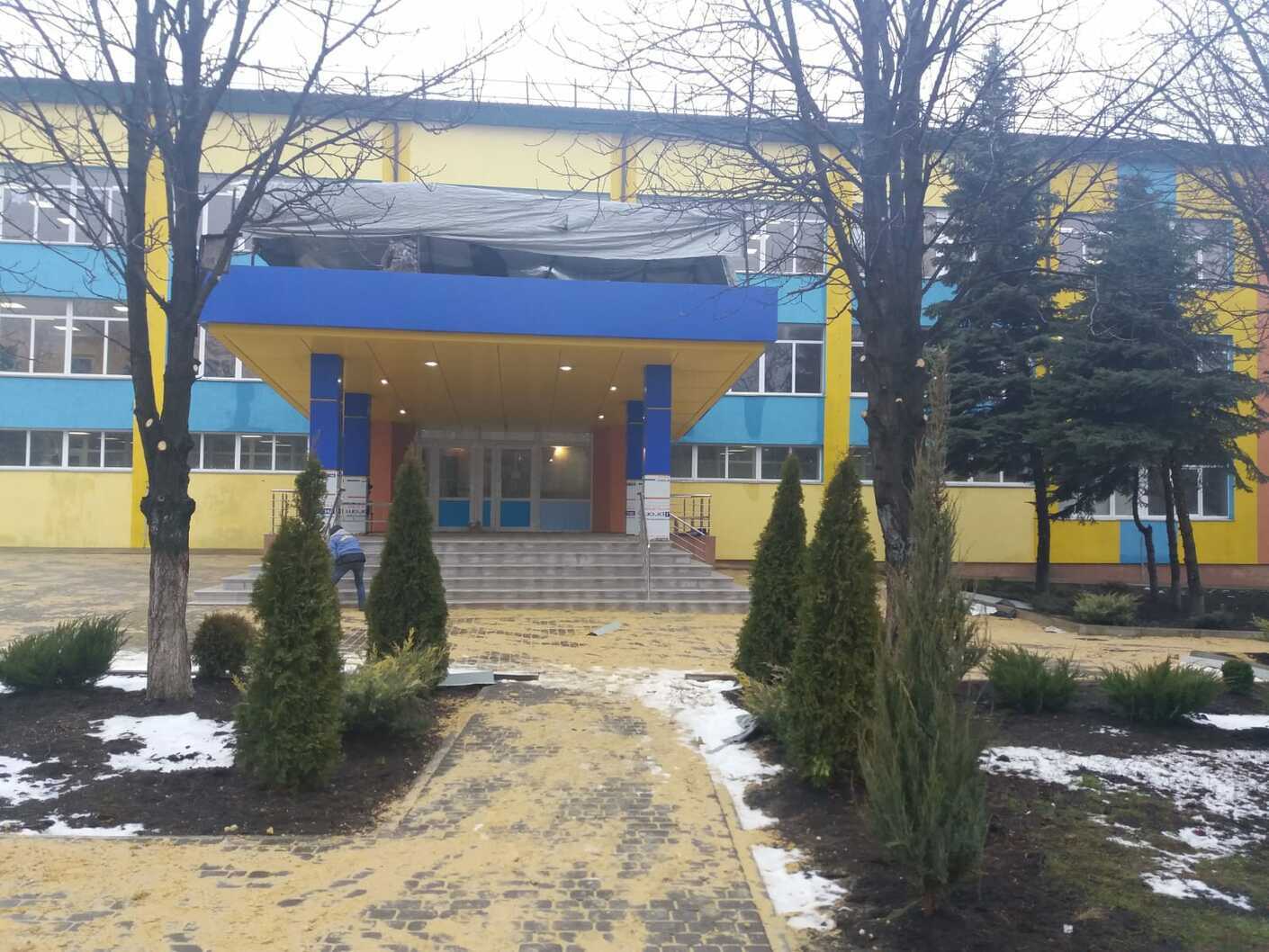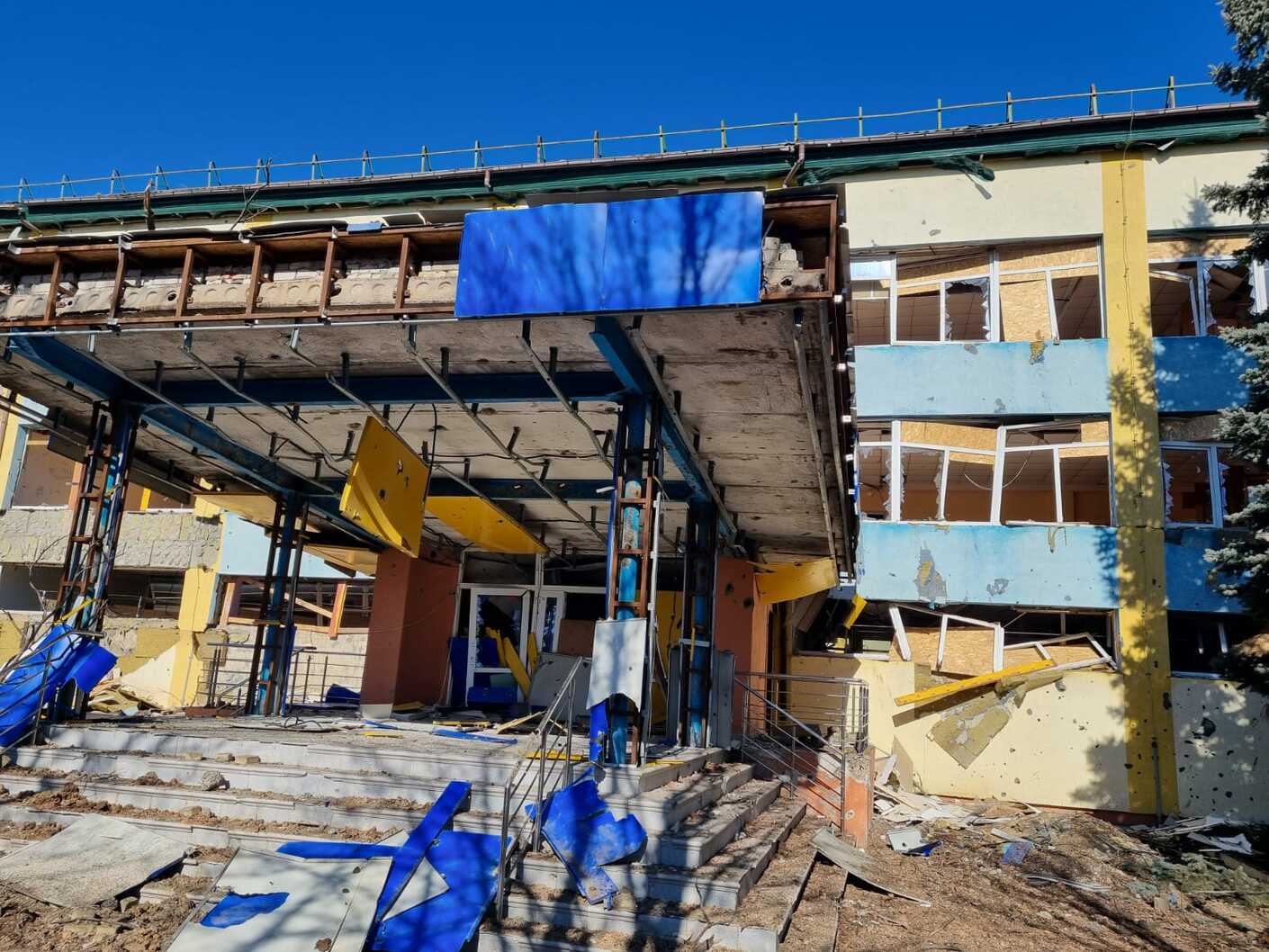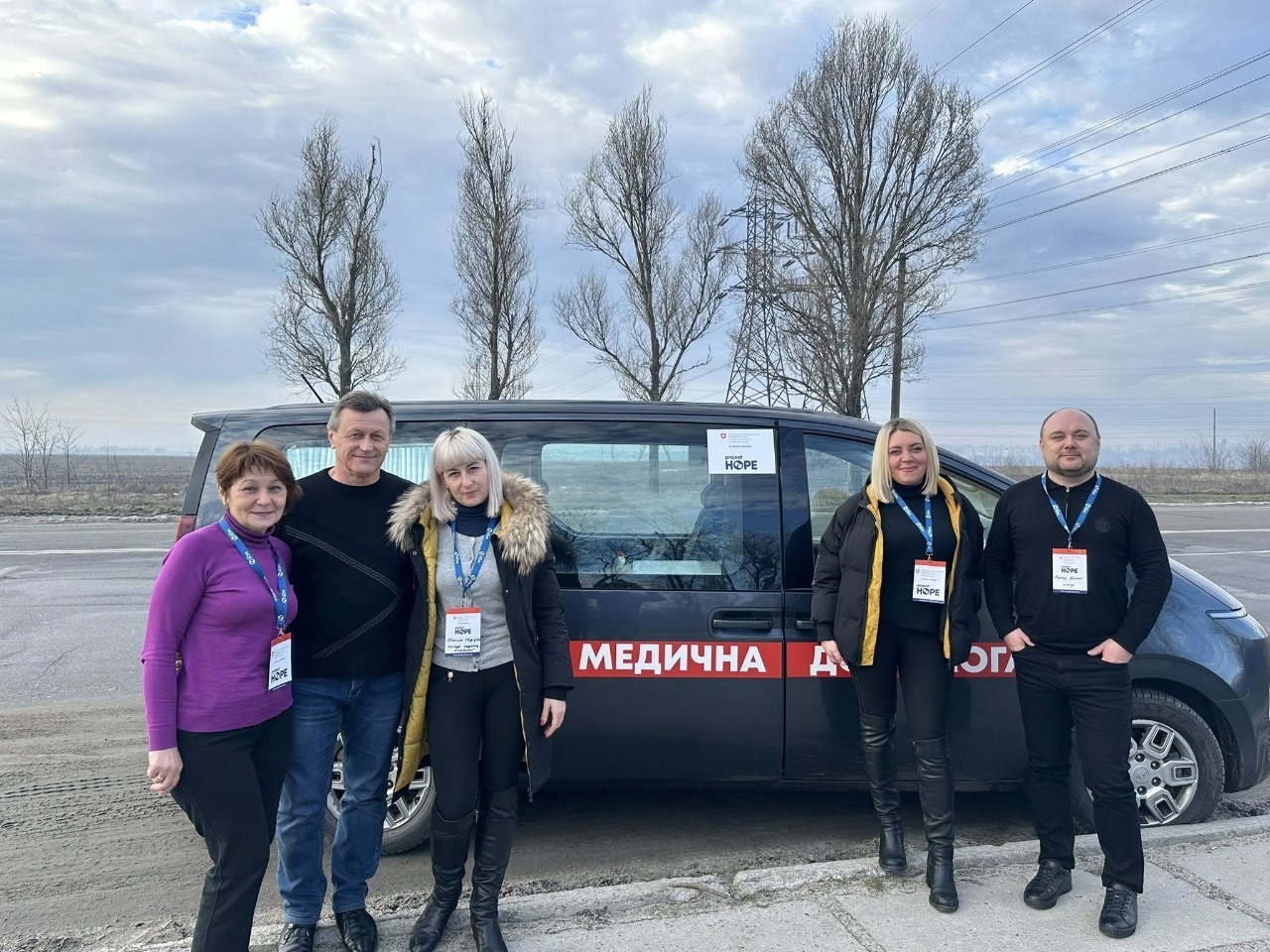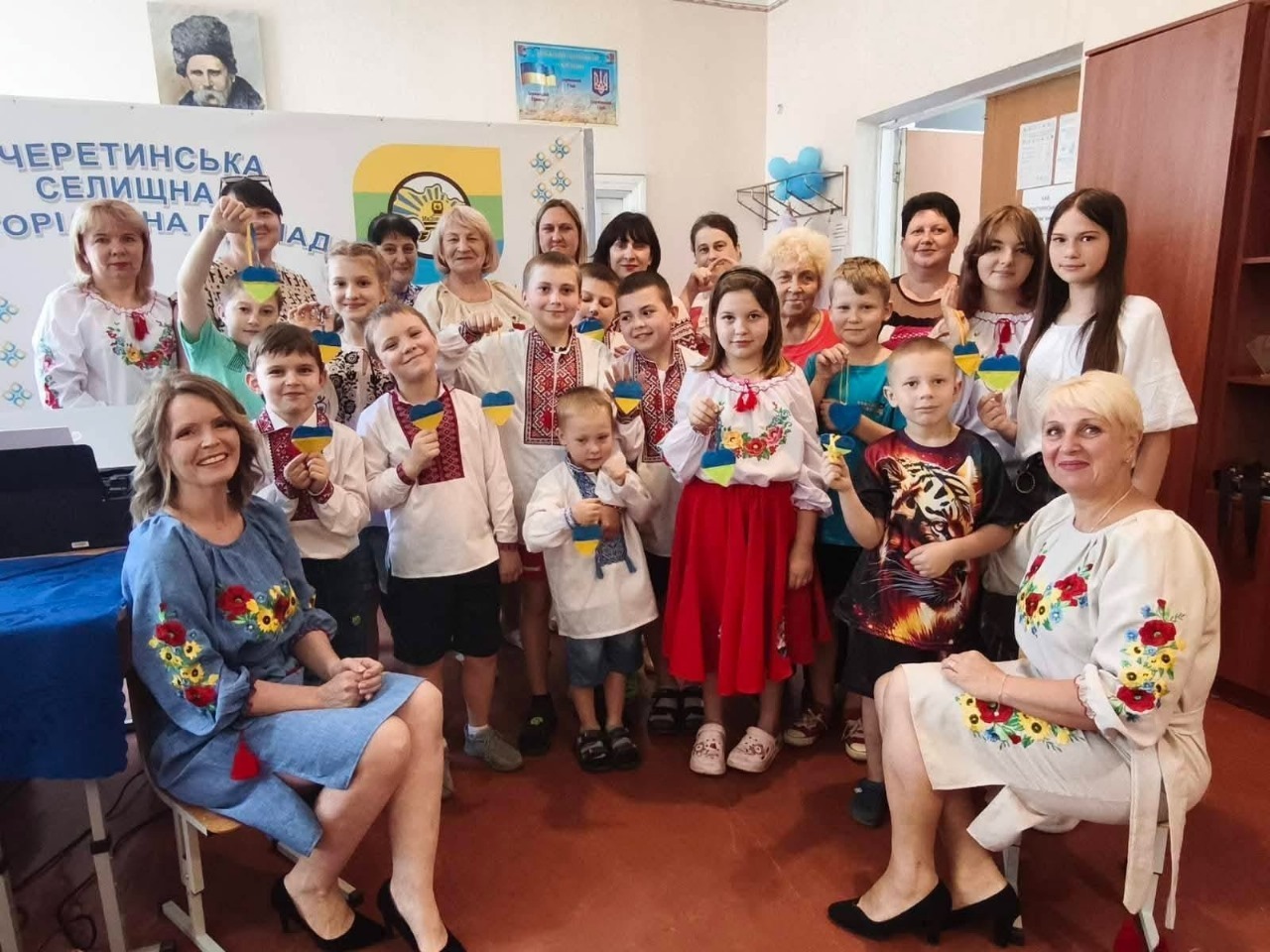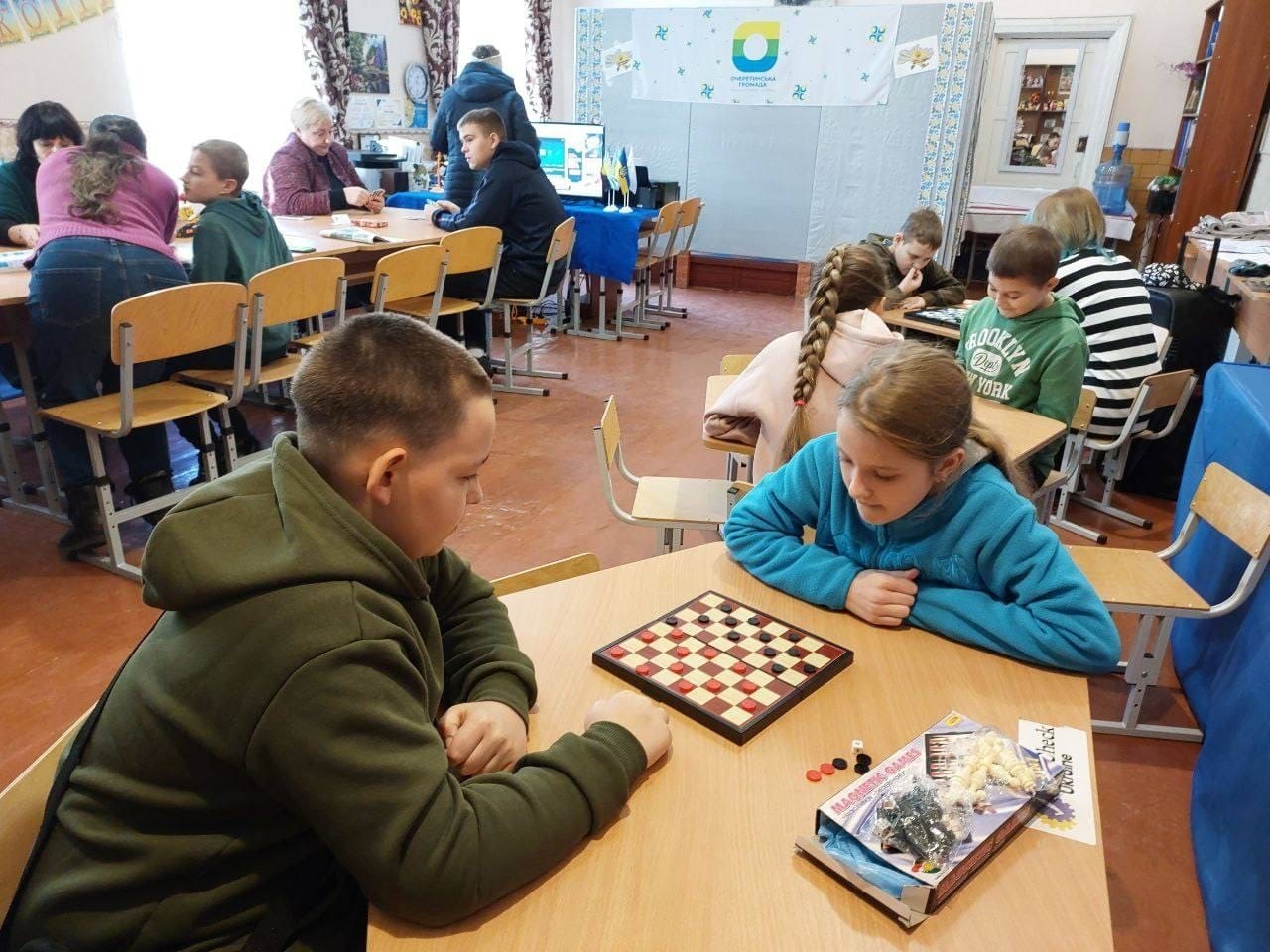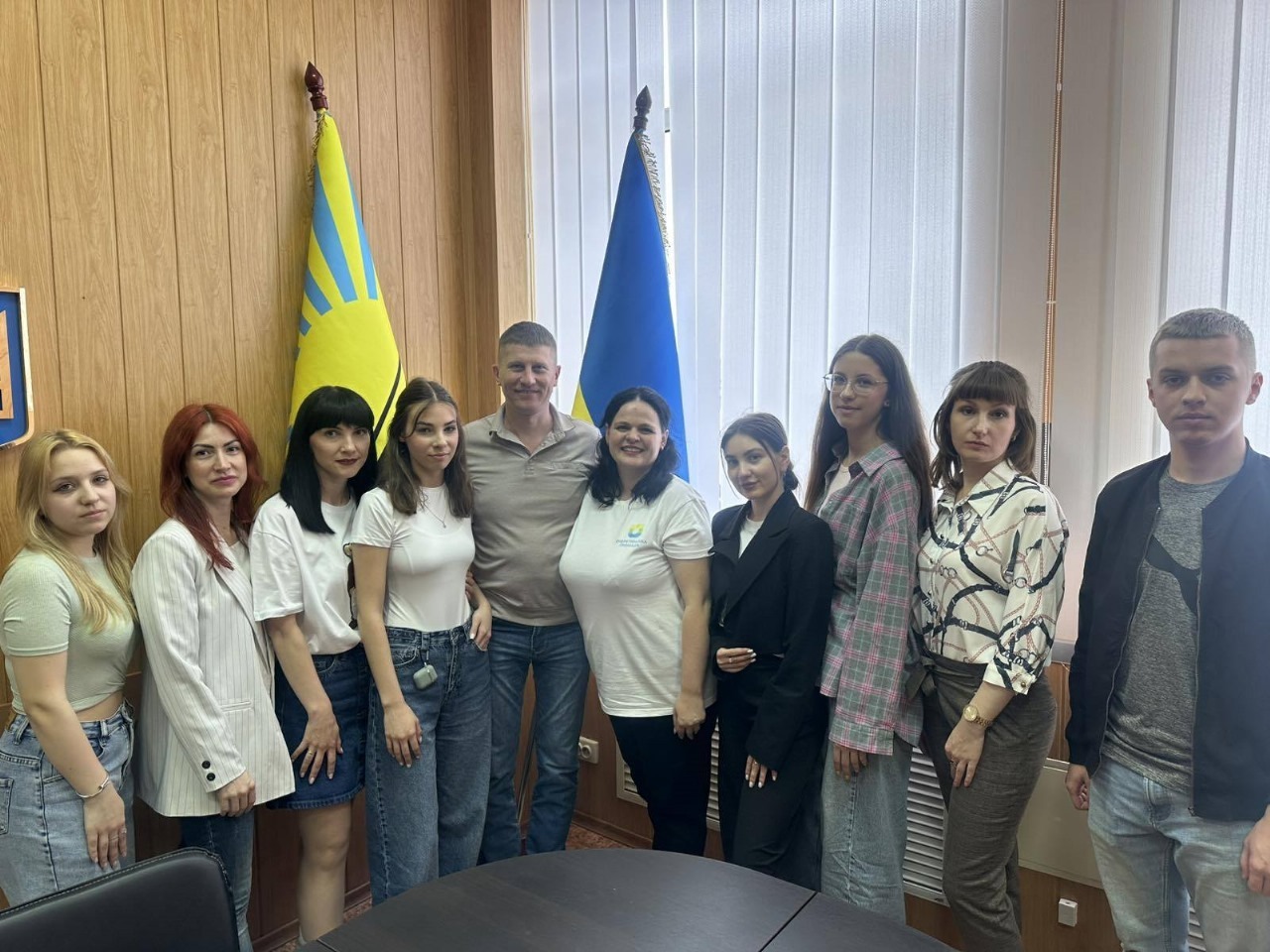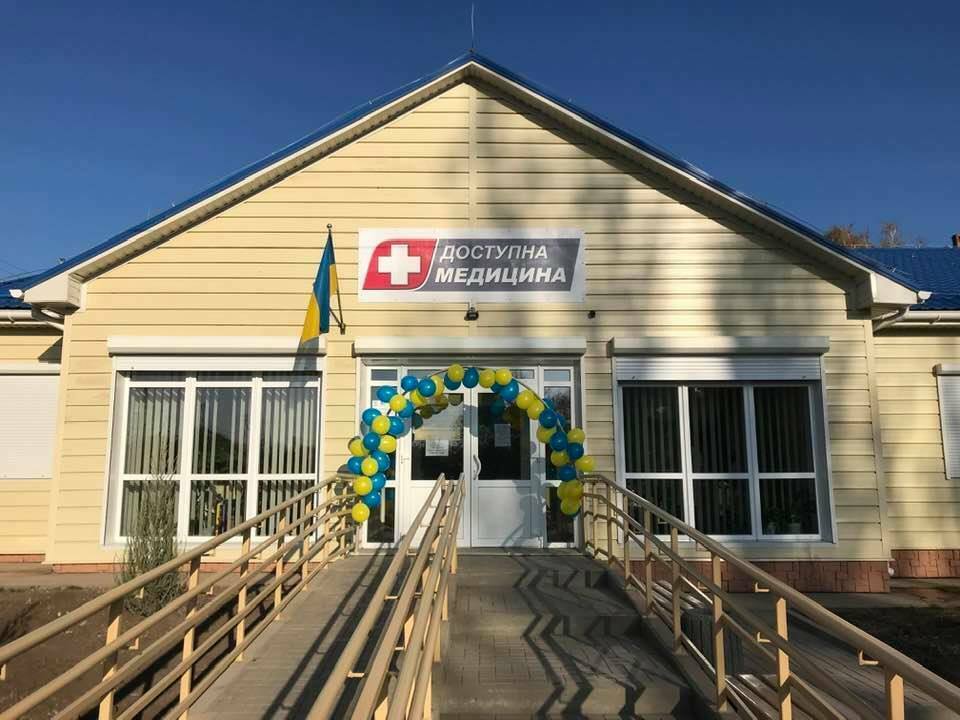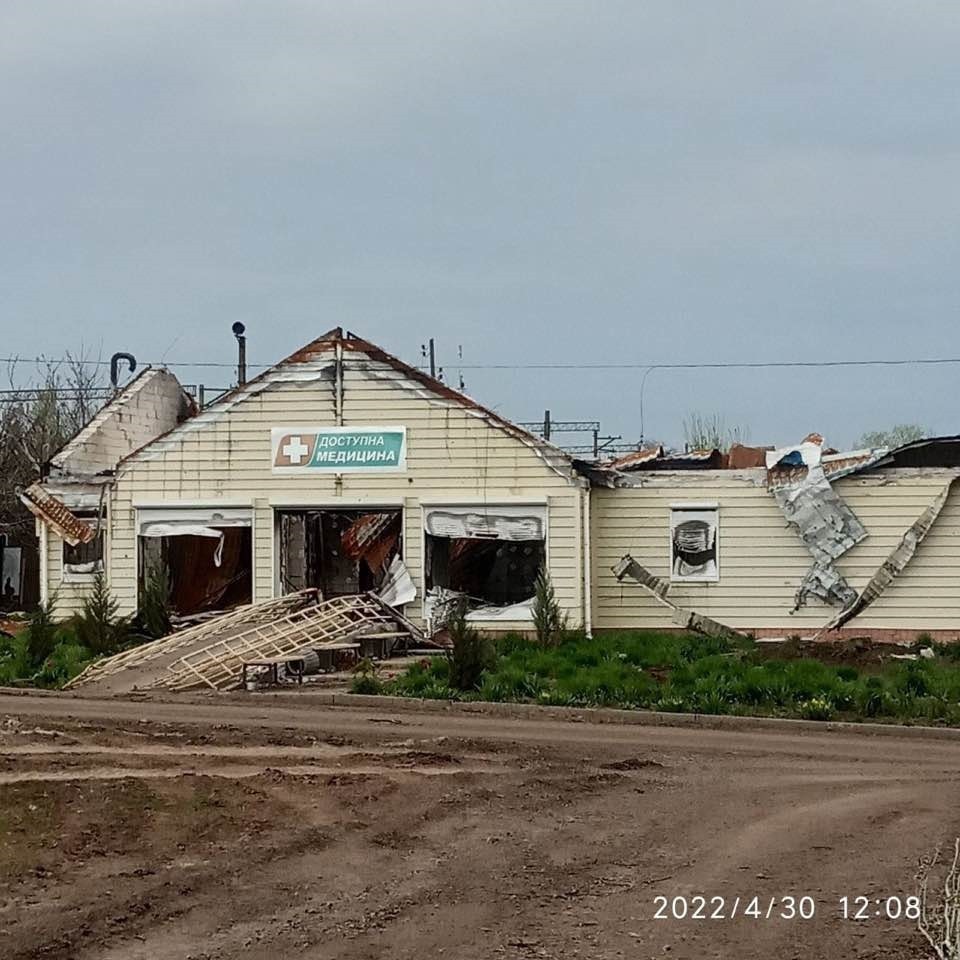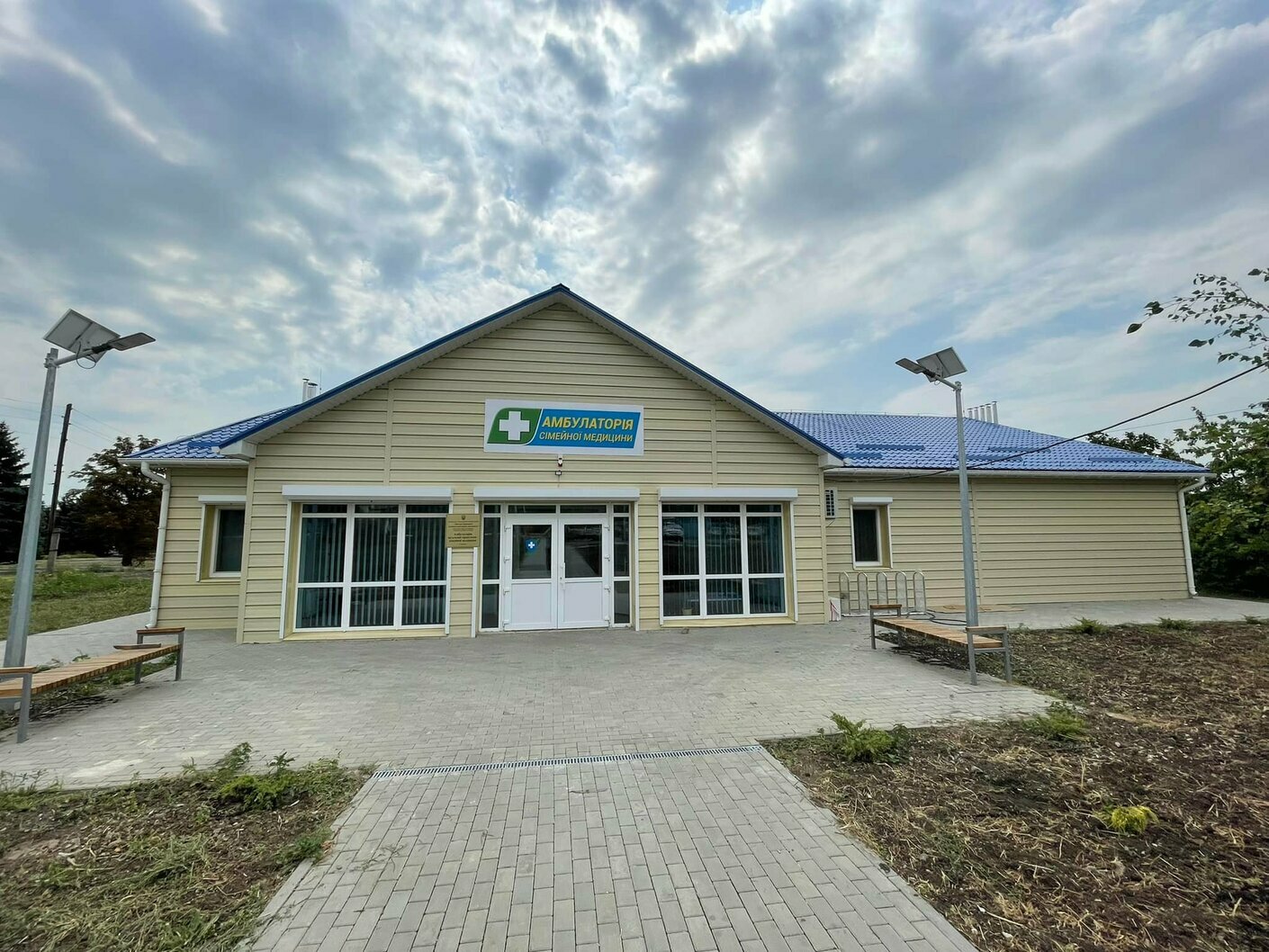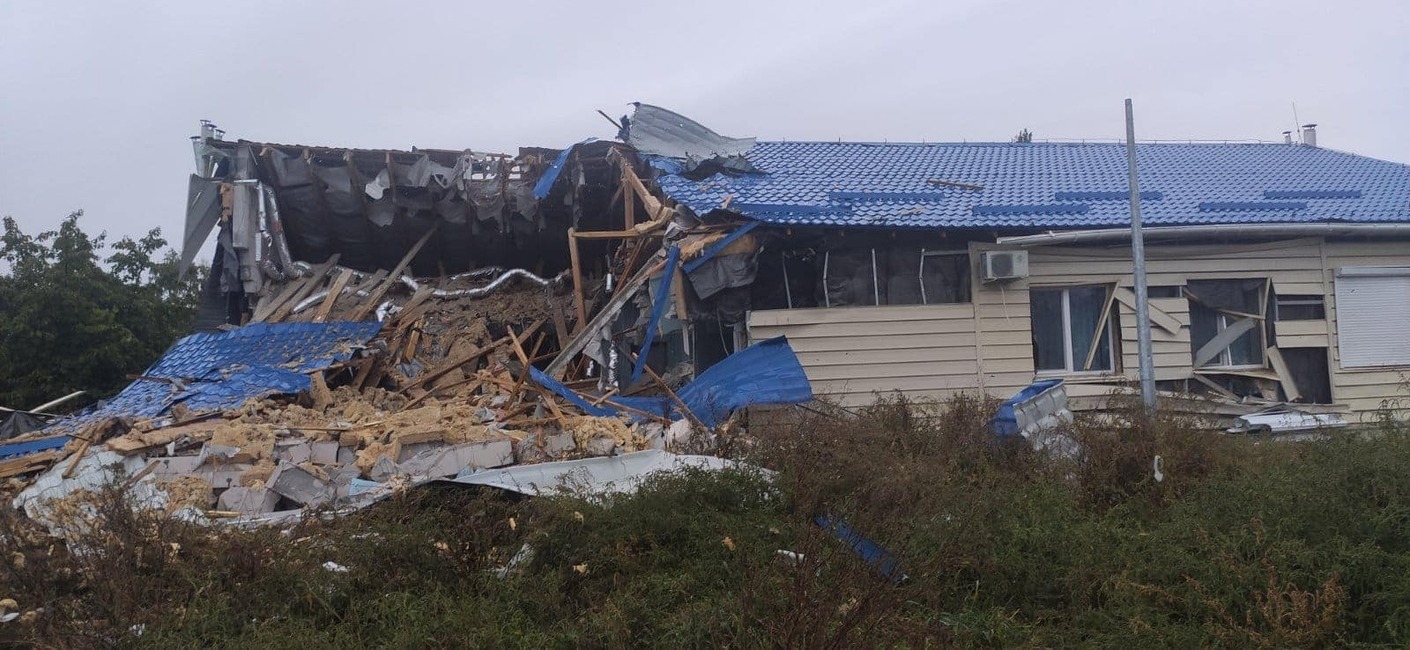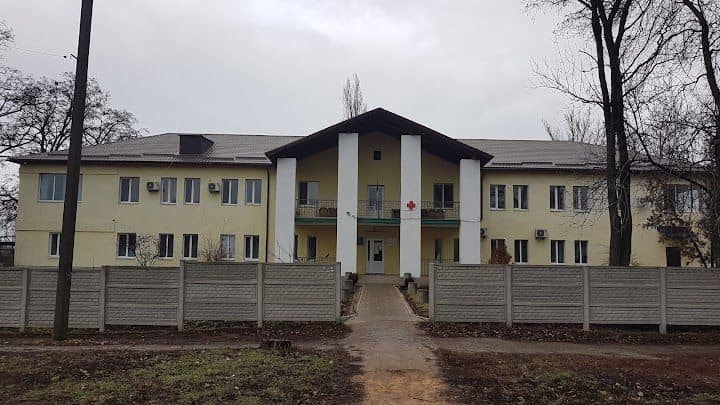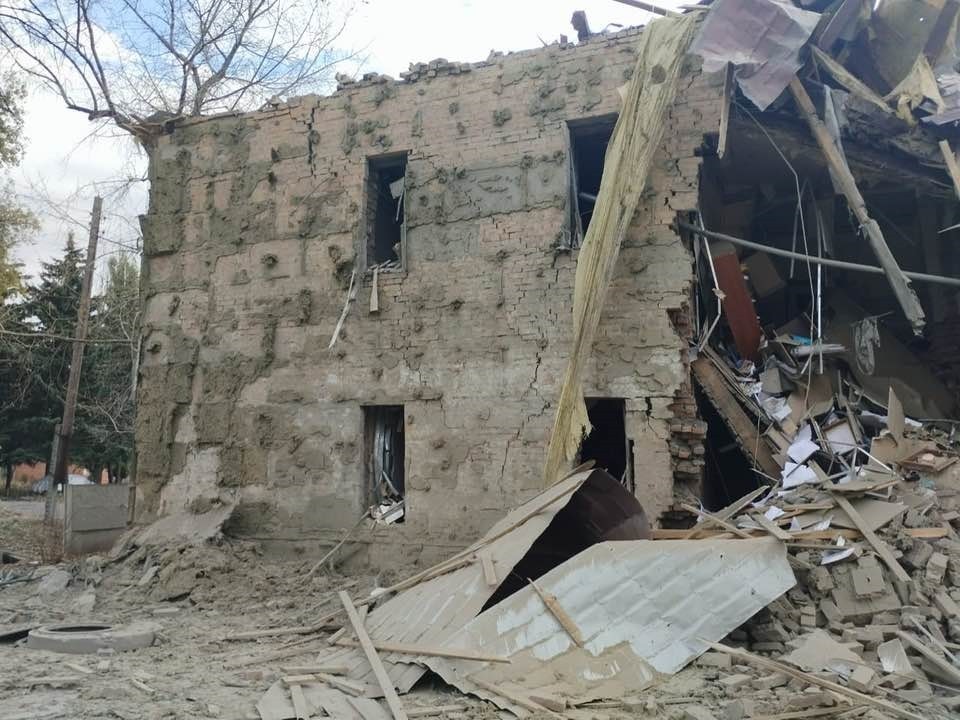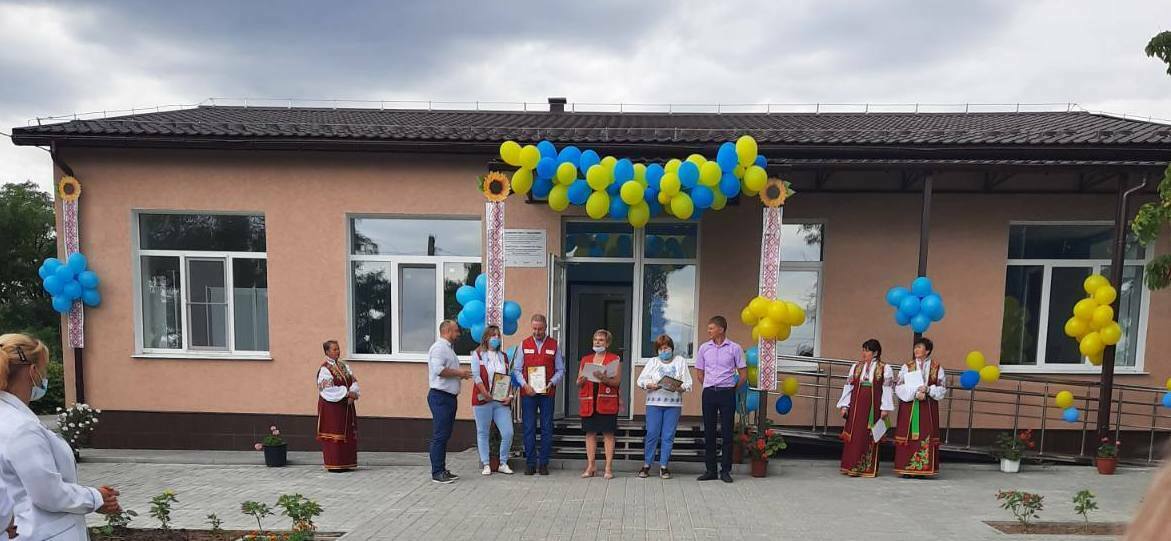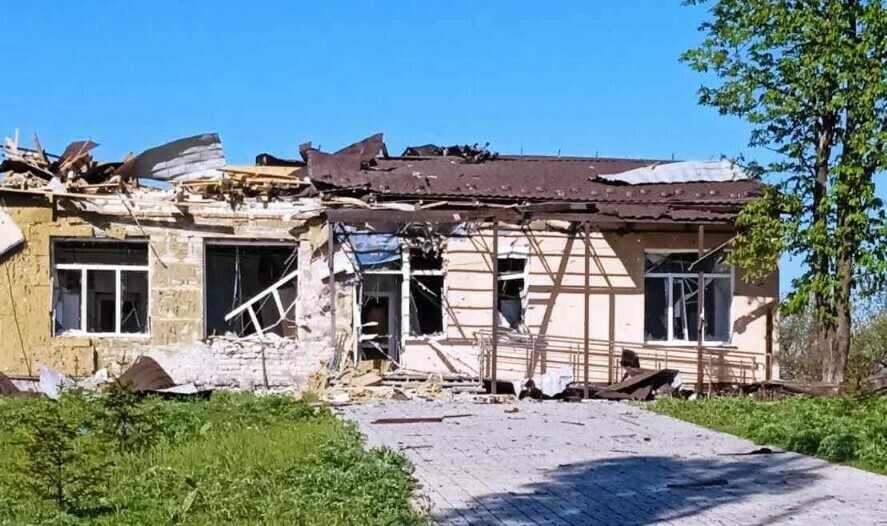Eleven years bordering on war
Mykola Kovalenko, Head of the Ocheretyne Military Administration of the Pokrovsk district, in the Donetsk region, describes how nine schools are operating online, how his community supports the army and the hundred-million-dollar subsidised budget of his community, only a tenth of which remains under Ukrainian control
By Dmytro Syniak
For 11 years, war has been a part of life for the Ocheretyne community. From April 2014 to February 2022, the war was treated like the weather here: some days more missiles came from across the contact line than others, and sometimes it was quieter than others. Soldiers in local shops and cafés, and on local roads, have long been a common sight. Local businesses and authorities have become accustomed to their needs and desires. The community's security was guaranteed not only by the military, but also by the powerful fortifications built between occupied Donbas and the border of the Yasynuvata district.
In mid-2020, this area became the Ocheretyne community, covering 726 km² and home to 24,000 people. Although there were only 10 kilometres between the outskirts of occupied Donetsk and the community’s southernmost village, Krasnohorivka, the community lived peacefully and developed rapidly. As a community ‘bordering on war’, it attracted particular attention from donors. However, the full-scale invasion undermined this progress, destroying the community’s short period of prosperity and the community itself. Villages, often with residents who did not have the means or the will to leave, were destroyed.
Recognising the strategic importance of the Ocheretyne community, a military administration was established to govern it from the outset in 2020, rather than a local council. Mykola Kovalenko, who had already been involved in local self-government for two decades, headed it. In 2003, at the age of 24, he became the head of his native village of Novoselivka Persha in the Yasynuvata district. From 2015 onwards, Mr Kovalenko worked as the first deputy head of the Yasynuvata District State Administration. From 2018 to 2021, he was the head of the administration. Now, Mr Kovalenko admits that the military administration no longer controls the community’s territory, most of which is occupied, while fierce fighting continues. At this difficult time for the community, we interviewed its head.
‘Russians turned a prosperous community into a desert’
What was life in the community like before the full-scale invasion?
Firstly, the Yasynuvata district, which later became the Ocheretyne community, included the village of Pisky, which was adjacent to the Donetsk airport. The airport runway was located within our district and the contact line stretched 72 km through it, from Toretsk to Karlivka. This area has been the scene of active hostilities for almost 12 years. The villages of Nevelske, Pisky, Verkhniotoretske and Kamianka have been in the news. I should also mention that the enemy occupied seven localities in the Yasynuvata district as far back as 2014. We have long been accustomed to the division of our lands into occupied and unoccupied areas.
How many residents lived in your community before February 2022?
There were about 22,000 people, including 7,000 IDPs who had fled the occupied Donbas region. Around half of them settled in our community, while the rest continued to move around. We have always experienced an outflow of people from the occupied territories. Since 2014, we have also experienced the complete destruction of a village first-hand — for example, Pisky, which had almost 3,000 residents before the war and only 12 shortly after it began. Furthermore, some of Pisky’s streets were occupied too. Since then, we have been evacuating people and providing them with everything they need in the absence of communication, water and electricity.
Was your community perhaps the most prepared for a full-scale invasion?
Indeed, it turns out that the answer is yes. I was involved in all of this while serving as deputy head of the district state administration under the leadership of Serhii Dobriak. I learnt a lot from him. Firstly, we evacuated pensioners, lonely people, and children. However, at that time, none of them travelled far from home, either to western Ukraine or abroad. For example, we went from Pisky to Netailove, which is 10 km away, and from Krasnyi Partyzan to Verkhniotoretske, which is less than 5 km away.
Where were the evacuees resettled?
In fact, providing them with housing was the main task of the Donetsk Regional State Administration. In 2020 and 2021, we restored a lot of housing with the help of various donors in Verkhniotoretsk and even in Pisky. We replaced roofs and windows. Overall, we achieved a great deal before the large-scale war began. We opened two new outpatient clinics and a kindergarten, overhauled two schools, and planned to build a swimming pool due to open in 2024. In Ocheretyno itself, we built a state-of-the-art water treatment plant so that villagers could drink clean artesian water from their taps… By the way, I managed to remove some of this treatment equipment from the community, which is now stored in another community.
What changed on 24 February 2022?
Well, probably everything, because the entire community, not just its borders, became an active combat zone. Not many people know about the heroic deeds of the defenders of Verkhniotoretske, a small Mariupol if you will. The village held out until 23 March 2022, when it was almost completely destroyed. This resulted in catastrophic losses for the occupiers. Consider this: on 24 February, there were 2,800 local residents in Verkhniotoretske. It was impossible to transport them all on the same day as all the roads were heavily shelled by the Russians, including by aircraft. People tried to leave on foot, and we picked them up along the way. We also organised groups of people who knew how to ride motorcycles, and they took people out one or two at a time. At that time, we received great assistance from local police and emergency services units stationed in Verkhniotoretske itself. They used all their equipment, but of course it was not armoured. There were casualties…
How many civilians have been killed in the community during the full-scale Russian invasion?
Unfortunately, we do not have accurate statistics as most of the community's territory is currently occupied. However, I can confirm that we have lost over 100 residents, including five children. Almost 400 people were injured. The number of casualties would have been much higher if our soldiers had not fought so bravely. At that time, we had the strongest defence line and the most combat-ready troops. It was their fierce resistance that prevented the enemy from completely occupying our community during three and a half years of continuous attacks. Two villages, Panteleimonivka and Oleksandropil, remain under Ukrainian control. However, the residents left a long time ago. Access to these villages is also impossible. Fighting continues there.
What information are you receiving from the occupied territories? How are the occupiers behaving there?
We hear different things. There are cases where people who were forcibly taken by the Russians to the occupied town of Yasynuvata call our starostas and ask how they can ‘get back’, i.e. to the territory controlled by the Ukrainian government. This is very difficult because they have to travel through European Union countries. It was much easier to agree to evacuation. Those who were not evacuated by us were taken by the Russians to Yasynuvata and Donetsk. Where there are no people, there are no war crimes. However, our people tell us about looting in the ruins. The Russians are constantly rummaging through the ruins, looking for valuable items… Our community's territory now resembles a desert with military positions in the middle. I think the village of Ocheretyne, the central locality of our community, has been almost completely destroyed. Not a single building remains standing. Schools, clinics and kindergartens lie in ruins. My native village of Novoselivka Persha has also been destroyed to the point that only about 10% remains, as there are no houses left standing. The only exception is Verkhniotoretske, where around a hundred people still live in the outskirts, which have been miraculously preserved. However, that is already behind Russian army lines.
Were there any pro-Russian residents in the community? How many?
There were a lot of them in 2014. However, we worked really hard with these people and their attitude changed completely. We used various methods, such as talking to them and organising national and patriotic celebrations. We also sent groups of our residents to western Ukraine to show them that they would not be mistreated there, and to give them a taste of the true Ukrainian spirit. And it worked! When we conducted a series of surveys in 2019 and 2020, we found that people were no longer looking towards Russia, that they were not interested in it. Many of these people later joined the Armed Forces of Ukraine, including three former civilian administration employees, one of whom is a woman. They were civilian administration employees and were mobilised.
Meeting with the military in 2023 in Ocheretyne. At that time, the majority of the community was still free from the Russians
Restoration of housing in 2022. Mykola Kovalenko is on the left
Delivery of humanitarian aid to the town of Selydove, which was home to many displaced persons from the occupied Donbas region until 2022. They have now been forced to relocate again because the Russian army has captured Selydove
School in Blahodatne before 24 February 2022…
… and after 24 February 2022
School in Ocheretyne before 24 February 2022…
… and after 24 February 2022
Between 2015 and 2022, the community attracted UAH 200 million in extra-budgetary funding
What part of the community’s territory is currently under Ukrainian control? What are the challenges for the military administration in these conditions?
Ukrainian military forces currently control around 10 per cent of our community’s territory. Although we no longer have access to it, it remains something of a symbol for us. As long as the community remains unoccupied, its heroic history of resistance continues. Under such conditions, of course, there can be no question of carrying out ordinary, ‘peaceful’ tasks such as providing public services. All we are trying to do is keep our people safe and bring them together. They are used to living close to each other in their villages. Losing this neighbourhood is very painful for them. That is why we are doing our best to compensate for this loss. They also need to be provided with everything they require. By the way, our children are currently on holiday at a camp in Zakarpattia, which was relocated there from Sviatohirsk. I visited them there the other day. The conditions are excellent and the programme is interesting. The cost of the children’s stay at the camp is being covered jointly by the Donetsk Regional and Ocheretyne Military Administrations.
Where do most of your residents live at the moment?
We have set up several hubs for our people in the Donetsk region and neighbouring regions. There, people can access psychological support and humanitarian aid. Up to 2,000 of our residents live in Kamianske, Pavlohrad and Dnipro in the Dnipropetrovsk region.
Does the military administration cooperate with international donors?
Of course! Thanks to our cooperation with the international charity organisation Project HOPE, for example, we received a minibus that our doctors now use to visit their patients. We also receive a lot of humanitarian aid, which we distribute to our residents through our social protection department, among other channels. Much of this aid is provided by the renowned American philanthropist, Howard Buffett. Before 24 February, our cooperation with international donor organisations was much broader. We replaced school roofs, carried out major repairs to kindergartens and replaced water pipes. Between 2015 and 2022, we attracted UAH 200 million in extra-budgetary funds.
Is your community taking part in the Shoulder-to-Shoulder: Cohesive Communities project?
Although we have previously collaborated in a similar way with various communities, for our community it is only just beginning. Nevertheless, we are hoping that future partners will help us primarily by supporting our people. After all, many of them cannot always afford to rent decent accommodation, particularly the elderly who live on a pension of around UAH 4,000. We are interested in assistance with housing and humanitarian and social support. We hope that our Shoulder-to-Shoulder project partner will be able to solve some of these problems and provide us with reliable support.
What is the budget of the Ocheretyne Military Administration?
Our budget for this year exceeds UAH 100 million, of which UAH 11 million comes from our own revenue. The majority of these funds come from state subsidies to compensate for the loss of our own revenue. We immediately transfer some of the money to the Armed Forces of Ukraine. To do this, we work alongside the Donetsk Regional Military Administration. First, we transfer the relevant subventions to the administration, which then sends the funds directly to the military units. This year alone, we have transferred tens of millions of hryvnias to the military through the region, as well as an additional UAH 3 million directly. In order to save money, we have also reduced our staff numbers as much as possible. According to the staffing table, there should be 90 specialists, but currently, only 38 are employed. This is sufficient to ensure the smooth operation of our most important departments, namely social protection and education. The Education Department is responsible for nine schools, so there is plenty of work to be done.
The moment of handing over a minibus from Project Hope to the Ocheretyne community
This year’s Vyshyvanka Day at the Ocheretyne community hub in Kamianske
Chess tournament in the hub of the Ocheretyne community in Kamianske
Meeting of the Youth Council of the Ocheretyne community with the head of the community in Dnipro
The problem of nine schools
Are nine online schools really necessary? Perhaps it would be better to make them into one school? There would certainly be considerable savings in administrative positions.
We have conducted repeated surveys on this issue among children and parents. Parents say that they do not want their children to spend time in shelters instead of studying, as often happens in offline schools. After all, some of these schools operate in a hybrid mode, i.e. they offer online learning as well as face-to-face teaching. Most of our children also do not want to go to the local schools. Online schools are also more convenient for people who are constantly moving. They have no fixed abode and are constantly on the move. One day they might be in the Dnipro region, and the next day they might be in the Zakarpattia or Kyiv regions. Another point is that we have highly professional teachers who achieve excellent results. Several of them have been named Teacher of the Year. Our school leavers receive golden medals and perform much better than others in the state independent assessment before entering university. Many of our children also win prizes at regional and national subject competitions. And not only in those. For example, our community team took fourth place in the All-Ukrainian Dzhura competition. In my opinion, it would be a mistake to close such schools.
But first-graders hardly go to your nine online schools, do they?
Actually, they do. During the three years of full-scale war, the number of students in our schools has remained the same. I must admit that I misspoke. In fact, we have six schools, but one of them has three branches. So, overall, it is not that many. Our schools have around 1,000 students in total.
Would you argue that online learning is, by definition, worse for these students than offline learning?
Why do you think that? If children go to other schools, I think their knowledge will suffer. The only point I agree with is that children lose contact with their peers when they study online... Closing schools is a very difficult issue for us. After all, schools are part of our future and our hope of returning to our villages one day to rebuild everything. What is the Ocheretyne community? Not only is it the territory, but also the institutions around which people gather. I want to preserve our residents’ unity for as long as possible, and schools help us to do that. Of course, you could turn six schools into one and fire five principals. But those five managers are good at their jobs, and I do not think we will be able to bring them back.
What would you like to tell the Government or Parliament? How could they support your community?
Personally, I would ask the Government to make an exception for communities like ours and allow us to keep our online schools open beyond 1 September this year. Give us at least another year. If we are going to return to our lands, we must be able to do so with someone. This applies not only to us. Yes, my community is occupied. But consider the situation from the perspective of residents of the Kramatorsk community, for example. It is not occupied, yet it is clear to everyone that schools cannot operate there offline. What if the Ukrainian Armed Forces manage to hold off the enemy, preventing them from reaching Kramatorsk? People will then return after the hostilities are over and schools operating online will be able to open their doors to students again. However, if we dismiss all teaching staff now, there will be no one left to return. Perhaps in a year, we will achieve a cessation of hostilities…
Either way, it seems likely that all six or nine schools will no longer be needed.
I understand this. By the way, one of the areas in which the Shoulder-to-Shoulder project works is integrating educational institutions in the occupied territories into new communities. I am not against this. However, I would still like to know that I have done everything I can to preserve the educational sector in my community. We should not give up on the occupied communities — perhaps we will be able to return to some of them at least. I am not talking about the best-case scenario of Ukraine returning to its 1991 borders. I do not consider this to be unrealistic. Throughout history, we have seen several rapid disintegrations of seemingly unshakable empires, particularly in the 20th century. Wars often led to the collapse. Russia is, in fact, an empire and is currently fighting an extremely unfavourable war. Perhaps we should just wait and see…
Are medical institutions facing the same challenges as schools?
No, it is slightly different. We had six outpatient clinics and seven primary healthcare centres. We relocated our outpatient clinics to other localities and asked the doctors to settle there too, so our people could continue to receive their services. The result is that five of our doctors now have 7,000 signed declarations with our residents. Sometimes our doctors visit patients themselves as part of a specially created mobile team. This team travels to both the Donetsk and Dnipropetrovsk regions. The team has a mobile laboratory at its disposal.
What is your opinion on the decentralisation reform? Has it made your community more resilient?
Absolutely! And not just in terms of defence. We have grown stronger economically, and we are looking to the future with hope. This reform has transformed local self-government, providing communities with ample opportunities for growth. And how many unnecessary staff have been cut! Our community has actually absorbed the former Yasynuvata district, which had its own district council and administration, as well as village and settlement councils. These structures employed twice as many people as our military administration did later on. The 'one district, one community' format turned out not to be as bad as experts said because the communities became large, capable and powerful. We had a great future, and I believe we still do. We just need to wait for the Russian empire to collapse, and do everything we can to ensure this happens as soon as possible..
Outpatient clinic in Verkhniotoretske before 24 February 2022…
… and after 24 February 2022
Outpatient clinic in Orlivka before 24 February 2022…
… and after 24 February 2022
Outpatient clinic in Ocheretyne before 24 February 2022…
… and after 24 February 2022
Primary health centre in Krasnohorivka before 24 February 2022…
… and after 24 February 2022

Tags:
war stories war stories special project report
Область:
Донецька областьГромади:
Очеретинська територіальна громадаSource:
Decentralization portal

18 July 2025
Вакансія: Експерт (ка) для перегляду РПУВ
Вакансія: Експерт (ка) для перегляду РПУВ
Avfall Sverige та SALAR International оголошують вакансію «Експерт для перегляду РПУВ» до програм «WM4U: Посилення...
18 July 2025
Запрошуємо громади до партнерства для...
Шведсько-українська програма Polaris «Підтримка багаторівневого врядування в Україні» запрошує громади до...
18 July 2025
Lviv Urban Forum 2025: одинадцять підсумків головної урбан-події України
Lviv Urban Forum 2025: одинадцять підсумків...
Lviv Urban Forum — це найбільша в Україні щорічна платформа для обговорення міських викликів, урбанізму та...
18 July 2025
Occupiers persecute local self-government: Ukrainian community leaders remain in captivity
Occupiers persecute local self-government:...
Since the outbreak of the full-scale invasion, the Russian Federation has been systematically persecuting...
